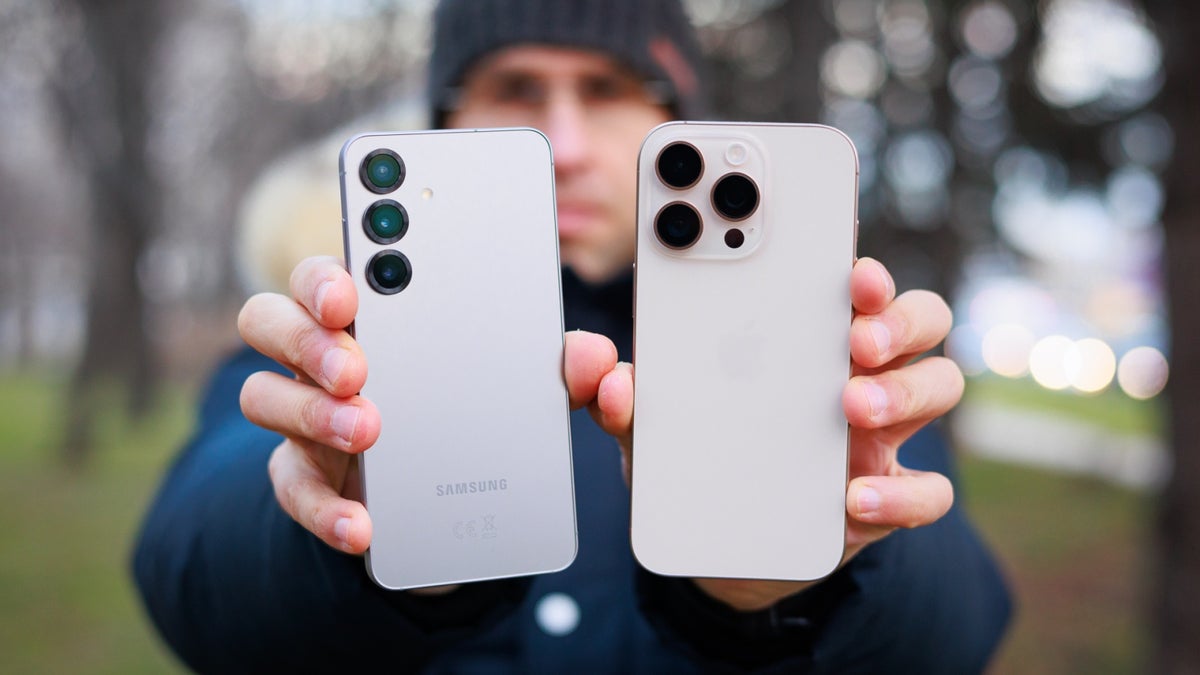Summary:
Apple and Samsung continue to dominate the U.S. smartphone market thanks to their unmatched ecosystems, flagship innovation, aggressive mid-range strategies, and strong carrier partnerships. Apple leverages brand loyalty and affordability variants like the iPhone 16e, while Samsung captures momentum with AI-powered devices and versatile pricing. Together, they retain over 80% of U.S. market share, leaving competitors far behind.
The Current U.S. Smartphone Landscape
As of 2024, Apple led the U.S. smartphone market with 61.3% share, followed by Samsung at 22.6%, combining for an incredible 84% of total sales (BankMyCell).
In Q1 2025, consumer sell-outs dipped by about 2% year-over-year, especially in the premium $800+ segment. Despite the slowdown, Apple gained ground—its share at the top three U.S. carriers rose to 72% (Counterpoint Research, Android Headlines).
By Q2 2025, Samsung staged a surprise leap, capturing 31% market share with 8.3 million units shipped (a 38% YoY growth), while Apple maintained 49% with 13.3 million iPhones sold (SamMobile, 9to5Mac).
These swings show how both brands play a constant game of market chess—each quarter offering new devices, pricing strategies, and marketing hooks to keep Americans buying.
Why Apple Remains Dominant
Apple’s strength in the U.S. isn’t just about specs—it’s about ecosystem, trust, and prestige.
- Ecosystem Loyalty:
The iPhone’s seamless integration with iPad, Mac, Apple Watch, and services like iMessage and AirDrop ensures users stay locked in. Switching to another brand often means giving up the convenience of this ecosystem. - Affordability Meets Premium:
The launch of the iPhone 16e, starting at $599, has been a masterstroke. It offers a premium experience at a mid-tier price, capturing budget-conscious buyers without eroding the brand’s luxury perception (The Tech Portal). - Resale Value & Longevity:
iPhones retain higher resale prices than most Android devices, and Apple supports them with software updates for 5–6 years—an appealing value proposition for long-term buyers. - Supply Chain Resilience:
Apple’s pivot to manufacturing in India (with a 240% YoY export surge) helps avoid tariffs, diversify production, and strengthen resilience (Reuters).
Samsung’s Relentless Rise
Samsung is America’s most versatile smartphone brand—offering everything from $150 entry-level devices to $1,300 foldables.
- Flagship Innovation:
The Galaxy S25 series integrates Google Gemini AI, delivering advanced real-time translation, AI photo editing, and predictive typing. This is Samsung’s push to lead the AI-smartphone race (Financial Times). - Mid-Range Muscle:
The Galaxy A series captured a significant slice of cost-conscious buyers, fueling Samsung’s 38% YoY U.S. shipment growth in Q2 2025 (SamMobile). - Production Strategy:
With 30% of U.S. shipments now made in Vietnam, Samsung reduces tariff exposure and increases supply flexibility (9to5Mac).
Real-World Examples of Market Power
- Apple’s iPhone 16e:
Lower price, premium feel—perfect for first-time iPhone buyers who can’t justify flagship prices. - Samsung’s AI Edge:
The Galaxy S25 offers AI photo correction so advanced that users post “unedited” pictures looking professionally retouched. - Carrier Loyalty:
At Verizon, AT&T, and T-Mobile, iPhones consistently top sales charts (Counterpoint Research). - Supply Chain Agility:
Samsung’s Vietnam output and Apple’s India manufacturing allowed them to sidestep tariff disruptions while competitors struggled.
10 Most-Asked Questions (FAQs)
1. Why does Apple hold more than half the U.S. smartphone market?
Its ecosystem, brand prestige, and carrier deals create a consumer comfort zone few brands can match.
2. How did Samsung close the gap in Q2 2025?
Aggressive Galaxy A pricing, timely S25 launches, and AI marketing buzz.
3. What is Apple’s strategy with the iPhone 16e?
Broaden the iPhone’s audience with a more affordable entry point while retaining high quality.
4. Are tariffs affecting Apple and Samsung differently?
Yes. Samsung benefits from Vietnam’s trade advantages; Apple offsets with India-based production.
5. Is AI becoming a key differentiator?
Samsung pushes AI-first experiences; Apple plans deeper AI integration in iOS updates.
6. Will mid-range devices shift market share further?
Likely. Apple’s 16e and Samsung’s Galaxy A range are both expanding user bases.
7. Why do consumers stick with Apple long-term?
High resale value, long software support, and ecosystem convenience.
8. What’s limiting other brands from entering the U.S. market?
Distribution hurdles, weaker branding, and supply chain gaps.
9. Are Google and Motorola threats?
Not yet—Google Pixel holds ~3% share; Motorola remains a distant third.
10. Should buyers wait for deals?
Yes—Samsung discounts aggressively post-launch, while Apple holds prices but offers carrier trade-in bonuses.
Key Takeaways & Practical Advice
For Consumers:
- Pick Apple if you value seamless device integration, resale value, and long-term updates.
- Pick Samsung for cutting-edge AI features and a wider range of price points.
For Retailers & Marketers:
- Highlight Apple’s 16e to budget buyers wanting into the Apple ecosystem.
- Market Samsung’s AI advantages and foldable innovation to tech enthusiasts.
For Supply Chain Planners:
- Diversify production locations to avoid trade disruption.
For Challenger Brands:
- Focus on unique U.S. retail presence and aggressive pricing to chip away at the duopoly.
Final Word
Apple and Samsung’s U.S. dominance isn’t accidental—it’s the result of decades of brand building, product innovation, and supply chain mastery. While other brands may see occasional growth spikes, the two giants’ ability to balance premium innovation with accessible pricing and strategic partnerships ensures they’ll likely rule the American smartphone game for years to come.


[…] Top 10 FAQs About Flagship Phones in 2025 […]